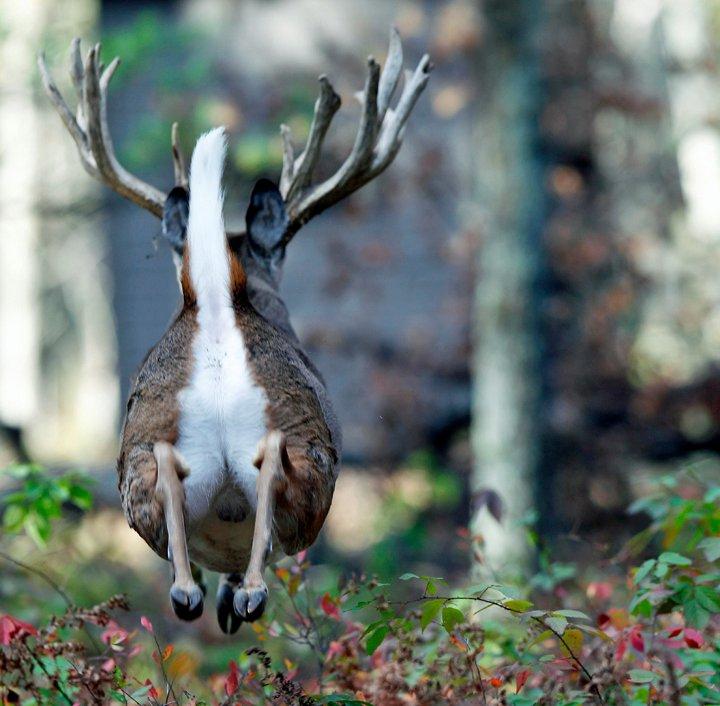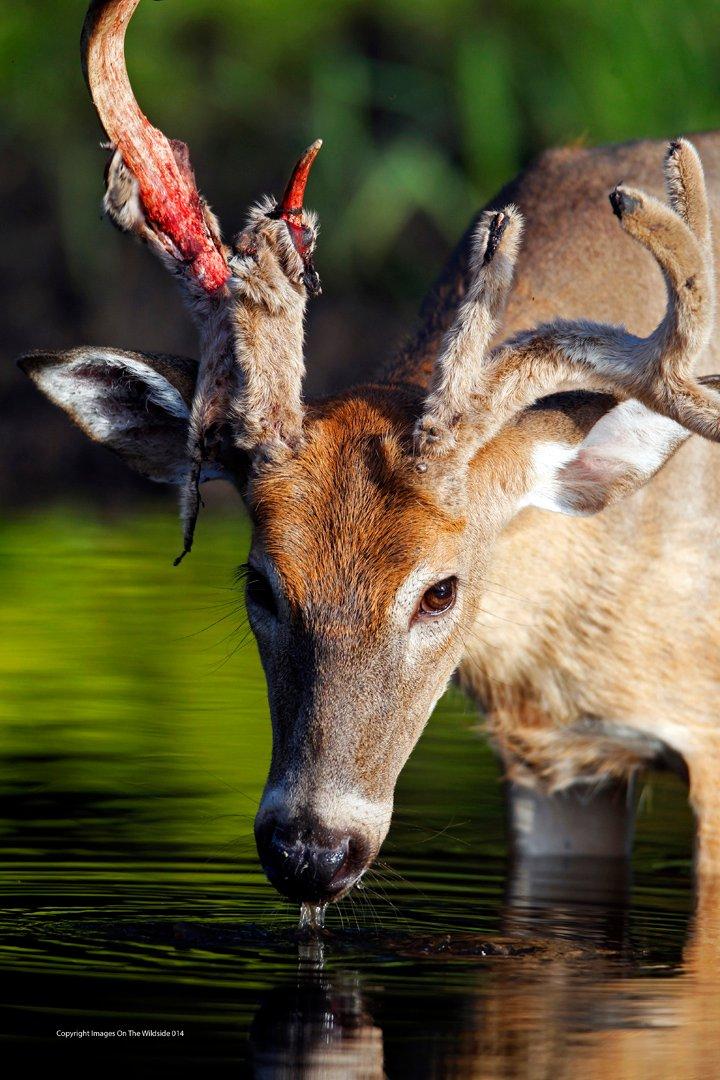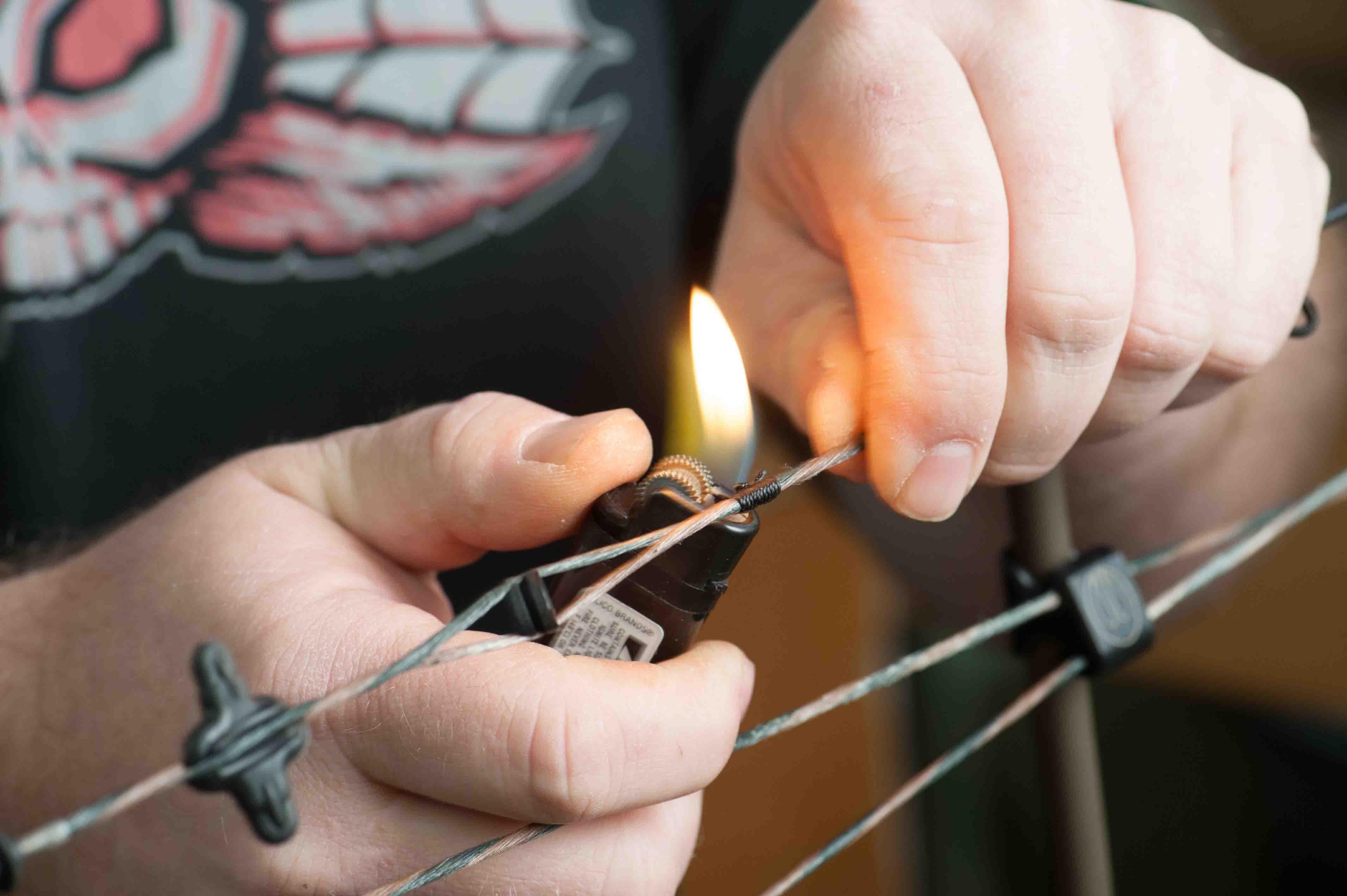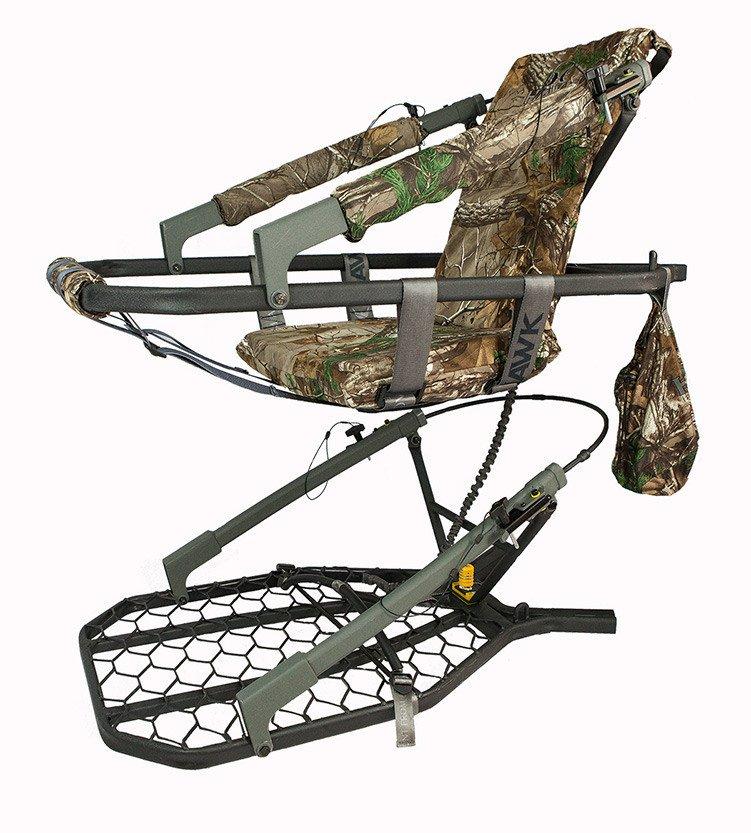You're on the verge of yet another terrible deer season. But it's not too late to change it -- and perhaps make it your best season ever. Here's how.
We know you. You're the guy who, come November, will be complaining the loudest because you haven't gotten a buck. Yet, here it is late-August—crunch time for deer hunters—and you've spent all summer doing absolutely nothing to make this deer season better.
That's right, my friend. Your deer season is about to suck … unless you get off your butt and do something about it. So read up, absorb our brand of tough love, and then get motivated.
1. You've lost your best hunting spot.
Studies show that more than 2/3 of all hunting occurs on private land, and most of that is land owned by someone else. Whether you're leasing ground or depending on a landowner's good graces, hunting access is a big deal, and a sudden lack of it will make deer season suck in the most miserable of ways. But it happens. A landowner gets a juicier offer for the ground he's leasing to you. Or his snot-nosed son-in-law decides he doesn't want you there. Regardless, when the landowner tells you to get lost … you get lost.
The Fix: Don't let it happen in the first place. If you're depending on landowner permission, do everything you can to foster that relationship. Stop by for a visit, and not just on the day before season. Send a Christmas card. Offer to help with chores. Be the very definition of a butt-kisser, and never assume you have permission from one year to the next—always ask. Be explicit about your plans for the season. The number one reason why I've seen permission lost over the years is because a hunter asked permission for himself, and then showed up with three of his hoodlum buddies.
If you're in a lease, get paperwork. Many hunters and landowners like to keep lease agreements informal. But here's the reality of today's world. We're a capitalistic society, and hunting rights are an ever-increasing value to landowners. If money totaling in the thousands is changing hands, you're wise to make it official. - W.B.
2. You're allowing EHD to dictate your season.
You've seen the images. Heard the chatter. Maybe found a big buck dead on your farm. EHD continues to cause trouble for whitetails across the country, particularly in areas where the summer has been long, hot and dry. There's no doubt about it. EHD sucks. It can cause massive die-offs in localized areas. If it has hit where you hunt, the season could suck.
The Fix: There are some key words to focus on above. Localized, could and tough.
Localized means while there will be areas where deer losses can be heavy, this is not a disease of totality. It will not kill every single deer, nor will it impact every area. The property you hunt may be hit hard while your neighbor sees minimal losses, if any.
Could isn't the same thing as will.
And tough? Well, suck it up, Buttercup. Life is sometimes hard. While you've been enjoying an air-conditioned environment much of the summer, the deer you hunt have been enduring the heat while wearing a fur coat. EHD is not fun. It will cause an impact on your season if the disease strikes where you hunt. But it doesn't mean you should give up.
If you suspect EHD has hit areas that you hunt, you should verify it yourself before making any decisions. Go to the property and seek out any standing water sources. If EHD has, indeed, came calling, you will know in short order. You'll find the grisly evidence near the water. If you truly have experienced heavy EHD losses, then you have one choice: Find another area to hunt.
Yes, it's possible. No, it's not easy. But what options do you have? Sit out the season?
That's no option at all. - T.H.
3. You're blaming outdoor TV.
Ah, outdoor TV. It's become today's punching bag of choice for legions of unsuccessful deer hunters.
Here's the scene. A camo-clad hero settles into a stand and pops a Booner buck on the edge of an emerald-green food plot, all before the first commercial break. You rush out and buy the food plot seed our hero recommends to grow an emerald-green food plot of your own. You pass on fork horns for a full season. You expect giant deer on your 100-acre lease. And when you get fescue and slightly larger fork horns instead, you blame outdoor TV for ruining hunting.
The Fix: Time for a reality check.
On TV, it can seem like killing a giant buck only takes about 30 minutes, says Realtree's Tyler Jordan. And it can make you think that growing big deer on your farm or lease is easy. While I do think you can grow big deer about anywhere in the country, realize the right ingredients have to be in place. It takes a ton of work and time. And passing up young bucks doesn't do much good if the neighbors are still killing most of them.
Even when you're doing everything right, Jordan says it's important to put things into perspective. He does much his hunting on Realtree Farms, which is 4,000 acres of prime South Georgia deer country. But it didn't get that way overnight—nor is there a Booner behind every tree today.
In fact, Jordan says that regardless of where he's hunting, a 140-inch buck is usually a trophy-sized whitetail -- and one that he's happy to shoot.
When I was about 13, I shot a buck at the farm that might've scored 130. At the time, it was the biggest deer killed there in like a decade. We have some 150- to 160-inch deer there now, but it's taken years of hard work to get to that point. But we go to places like Kansas or Iowa to film, and it seems like there are giants everywhere. You just can't compare a place like that to your average hunting land in the South or the East. Even Realtree Farms. The makeup of the herd, the food, the habitat - it's all different.
So what's the takeaway? Lighten up. Enjoy outdoor TV for the entertainment it provides and the useful tidbits picked up along the way. Realize that most hunters will go a lifetime without even seeing a Boone-and-Crockett whitetail on the hoof - and that makes those bucks all-the-more special. And understand that while managing land for better deer hunting is a ton of fun, it's also grueling, expensive, miserable work on a late-August afternoon. - W.B.
4. Your bow string and cables haven't been replaced since 1992.
If your bow's string or cables break, your hunt is over until they can be fixed. But there can be big problems with bow strings beyond just breakage. Have you ever picked up your bow after months of not shooting it, fired a few groups and thought, Man, my sight is off?
Often, it's not your sight at all. Over time, particularly after exposure to the elements and extended use, strings and cables stretch. When they stretch, your cams and nocking point move. And suddenly, your arrows are leaving the bow crooked. The average redneck slathers his string in extra wax and blames his issues on a faulty sight.
The Fix: It's simple. Replace your strings and cables at least once every couple seasons. Strings erode from the inside-out, says Danny Hinton, owner of Hinton Archery. Many times, the wear on them isn't even visible to the naked eye. It's only when you start shooting that you realize they've stretched. - W.B.
5. You can't shoot a deer. Literally.
My son is a crack shot in the backyard. Better than I was at his age. Heck, probably better than I am now. But he's missed several deer in the woods. Badly.
What gives? His nerves. And mine, to be honest. Here's another truth: He's likely going to miss another deer this fall. And I just might as well.
The Fix: There is no practice like real-world practice. And that's just the way it is. You'll never hear me call any animal a target, but shooting deer is the only way you'll ever get good at shooting deer.
Early-season hunts are perfect for shooting does. No, you don't want to be stomping all over your primary big-buck haunts. But there is no need to. Pick an area away from core bedding cover and where doe groups like to concentrate. It's hard to beat the inside corner of a crop field, where does are regular visitors during the waning hours of daylight throughout September and October. These are prime places to ambush them and see just how good a shot you really are.
Spending the off-season shooting at foam targets is a good thing. It develops that muscle memory you're going to need. But there is no way a backyard shooting session can fully prepare you for doing the deed in real-time. That comes only with experience. And experience comes only from taking shots at real, live deer. - T.H.
Sidebar
Gear that Doesn't Suck
String It
So you're going to heed Brantley's advice and replace those ancient cables and string? Excellent. Winner's Choice strings are a solid option.
Climb It
Taking advantage of early-season opportunities often means changing locations to hit the hot food source. A climbing stand does that better than any other setup. Hawk Treestands is a new company with some interesting offerings including its Warbird Climber.
Tip It
Sharp broadheads kill deer. G5 makes some of the sharpest. The latest is the Havoc, a two-blade mechanical with a 2-inch cutting diameter.
Shoot It
To kill deer at a distance, you need a gun and optics up the task. The Vortek Strikerfire LDR (Long Distance Rifle) can extend your muzzleloader range.
6. You have an $800 rifle with a piece of grade-A junk scope mounted to it.
You're finally ready to pony up for that new deer rifle you've been after for years. Then the guy behind the gun counter starts ringing it all up. That'll be $600 for the rifle. And $400 for a scope.
Hold up. This is a rifle you'll be shooting maybe 10 times a year, sight-in time include, and the scope costs nearly as much as the gun? There's another scope sitting right there on the end that costs $50. Mount that sucker up instead.
And then it happens. The buck of a lifetime steps out at the end of the field 200 yards away, just before dark. And you can't see him in your scope. Just like that, the one chance you'll get in your entire life at a true giant is gone. What would a little extra light-gathering ability have been worth then?
The Fix: Get what you pay for holds true more for optics than any other category of hunting gear.
These days, numerous gun companies sell rifles capable of outstanding accuracy, a lifetime of performance, and an MSRP of less than $500.
Pair one of these with a premium scope, and you'll have all the deer rifle you'll ever need, and save hundreds of bucks to boot.
If a higher-end rifle is really what you're after and you must save money on the scope, there are some excellent mid-priced optics on the market today. One of the best I've used is the Bushnell Banner 3x9x40 mounted to my muzzleloader. That scope features Dusk & Dawn Brightness multi-coated lenses that really do amazing things in low light, particularly for the price. It cost around $150 (about the same as the muzzleloader itself), and I've had it in place without adjusting the zero for five seasons now. I killed one of my best whitetails ever with that setup last season.
You probably won't get a decent scope for less than a Benjamin. And the inside of a well-lit sporting goods store is not the place to evaluate optics, because they all look good there. It's the low-light performance and the quality of construction that sets good scopes apart from the crappers. So ask around. Read reviews. And take the process of buying a scope at least as seriously as the process of buying a rifle. - W.B.
7. You don't learn from the past.
Mistakes are made each and every deer season. No shame in that. But continuing to make the same ones over and over again? That's lunacy. You made a bunch of mistakes last year. And the year before that.
The Fix: Do everything you can to avoid making the same mistake twice. And you do that by paying attention and taking notes. Every deer season is an opportunity for education. You can observe deer all you want in the spring and summer, but you simply aren't going to learn as much as you would while sitting on stand.
Trail cameras are tremendous tools. But if you don't pay attention to every bit of data they provide, you're not seeing the full picture. In the past, keeping track of all the notes and data was a pain. I have spreadsheets with all manner of data from previous seasons stuffed in every nook and cranny of my hard drives. But, thankfully, technology has changed things for the better.
Now there are several outlets offering management tools designed specifically for keeping track of your data and information, from DeerLab to HuntForce to HuntSoft. (In the interest of full disclosure, I have to state that I've had a hand in the development of HuntSoft. And I did so because I wanted a system that did what I needed it to do.)
I use HuntSoft to map all of the areas I hunt. I then create stand and camera locations. With those in place, I dump every single trail camera and in-field sighting in that I can. The system then spits out reports that tell me whether the moon phase really is impacting movement, which stands are seeing the most action in a particular wind direction and revealing critical weather changes that are causing deer to move.
Keeping track of only your buck images is a big mistake. Deer are deer. Does move for many of the same reasons that bucks move. And you're likely going to get a whole lot more photos and in-field sightings of does than bucks. Learn to utilize that data and you will start to see patterns that will help you kill more deer. And avoid making the same mistakes you've made in the past. - T.H.
8. You've neglected your food plots.
Food plots remain the most immediately beneficial habitat improvement that the average deer hunter can make. The good news is that there is an entire sub-industry out there dedicated to helping hunters plant food plots. The bad news is, planting food plots takes a perfect blend of time, equipment and rain.
The work isn't complete just because the plots are in the ground, either. Perennial food plots like clover and chicory require steady maintenance. If you haven't looked at your clover plot since last turkey season, chances are it looks like a lush field of weeds. If you haven't broken ground yet on a planned fall plot, you're about to miss the window on a prime early season hunting opportunity.
The Fix: Different types of plots require different types of maintenance. I've heard of guys getting 7 or 8 years from a clover plot. In the real world, I expect four solid seasons from a clover plot simply by oversowing it with new seed in the early spring, applying fertilizer and lime (ideally as recommended by soil samples) and mowing it a couple times during the summer. Cutting a clover plot down to 8 inches tall just before a forecast rain creates vigorous new growth almost without fail.
Right now is also the time to plan and establish fall plots. September is a pretty good month to establish a clover plot in much of the east (particularly from Illinois south), but you shouldn't expect much deer usage on that clover until the following year. That's why you're smart to mix new fall clover plots with an attractive buffer crop of some sort. Cereal grains like winter wheat and oats are tough to beat because they're easy to grow and provide near immediate attraction that lasts all season. - W.B.
9. Your broadheads fly crooked and are dull as daytime TV.
The buck is 22 yards away. And you're going to miss it by 5 feet. How does that happen? Simple. You're shooting a broadhead out of a bow that wasn't tuned. But it's probably a good thing you won't hit the deer anyway. Because your blades are butter-knife dull after riding in your quiver for the past three seasons.
The Fix: This is one of the simplest problems to fix. Tune your bow. Replace or sharpen the blades. The broadhead almost always gets the blame for errant arrow flight, but it's not always the culprit. It might be the bow and the guy shooting it.
A properly tuned bow will shoot all broadheads better, including mechanicals. But it will shoot fixed-blade heads infinitely better. Tuning your bow is not difficult and doesn't take all that long. There is no shortage of tutorials for getting it done and I won't cover them all here. But you must get your bow tuned to the broadheads you intend to use.
Don't switch broadheads mid-season unless you test them and tune again. And, for crying out loud, make sure the things are sharp. Scary sharp. Replaceable-blade heads are perfect for guys like me who can't sharpen anything. Blades should be replaced before the start of the season and any time you shoot the arrow. No exceptions. No excuses.
If you use heads that can be sharpened, make sure you do it. If you need a hand, the Spot-Hogg Bloody Buddy is an awesome (albeit a bit pricey) tool for getting the job done right. - T.H.
10. You read too much.
Hunting publications, including Realtree.com, are full of useful information and you've spent months devouring every how-to piece you can find, and you intend to follow the advice of those pros to the letter. Your season is about to suck because of it and we outdoor writers will be cussed once again.
The Fix: Here's a dirty little secret that outdoor writers hold tight: We don't know everything. A story about rattling in bucks in Iowa, for example, can contain a lot of great advice. Follow it here in southern Michigan, however, and you'll send any buck that's lived long enough to grow a second set of antlers running for the hills. Can rattling work in pressured areas? Yes. But you'll need to figure out for yourself just how to apply it properly.
Sure, you will be able to use many of the tips that Brantley and I are sharing here. In context, we know they work. But will they work exactly as prescribed in the area you hunt? No. Not unless you're able to apply a bit of woodsmanship and common sense to them.
Common sense applies to about everything in deer hunting. You have to be able to take well-rounded advice and apply it properly to where you hunt. Read and learn from those how-to articles, and then adapt them based on your personal experiences with the deer and areas you hunt.
Do that, and you will likely find that your deer season didn't suck at all. - T.H.













